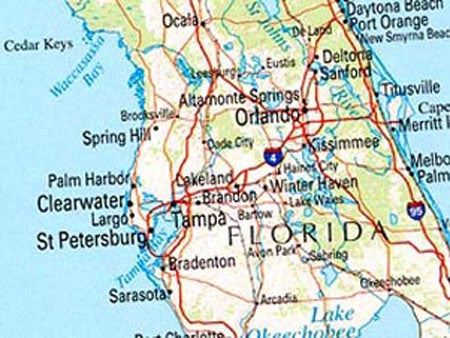The recession is over, but Florida’s economy won’t be quick to rise. Instead, expect a slow, “unleavened
recovery.”
That’s the message from Sean Snaith, director of the University of Central Florida’s Institute for Economic Competitiveness, in his latest statewide quarterly forecast released this morning. Snaith says Florida’s recovery will be flat, at least during its first year.
“We still have the plague of the housing bust, stagnant population growth and the labor market to remind us of this recession,” Snaith explains. “The recession may have passed over, but for now what we have in its place is an unleavened recovery.”
Snaith also predicts that Florida’s unemployment rate will peak later this year at about 12.2 percent. Unemployment will stay above 10 percent through the first quarter of 2012, he says.
The one job sector that has and will continue to grow is health care, Snaith adds. “It is still difficult to tell exactly how health care reform will manifest itself in Florida, but expanded coverage and an aging population will clearly continue to drive job growth for the foreseeable future,” he said.
Other economic indicators offer additional good news: Real Gross State Product (GSP), the state-level analogue to GDP, will finally see an annual increase this year, and personal income growth will accelerate to 3.5 percent after two years of contraction.
“The recession has ended in Florida, but the recovery will be less than miraculous,” he said. “Going forward, however, we are much more likely to see data releases that are on the positive rather than negative side.”
Snaith’s forecast offers predictions through 2013 for Florida and its 12 metropolitan regions. Those areas are Naples, Daytona Beach-Deltona, Gainesville, Ocala, Lakeland, Palm Bay-Melbourne, Pensacola, Miami, Jacksonville, Tallahassee, Tampa Bay and Orlando.
His entire forecast is available at http://www.iec.ucf.edu.
Other highlights include:
Snaith is a national expert in economics, forecasting, market sizing and economic analysis who authors quarterly reports about the state of the economy. Bloomberg News named Snaith as one of the country’s most accurate forecasters for his predictions about the Federal Reserve’s benchmark interest rate, the Federal Funds rate.
Snaith is also a member of several national forecasting panels, including The Wall Street Journal Economic Forecasting Survey, the Western Blue Chip Economic Forecast panel, the National Association of Business Economics Quarterly Outlook Survey Panel, the Federal Reserve Bank of Philadelphia’s Survey of Professional Forecasters, Bloomberg U.S. Economic Indicator Survey and USA Today Economic Survey Panel. Blue Chip named him the most accurate forecaster for California in 2007.
The UCF Institute for Economic Competitiveness’ mission is to expand public understanding of the economy by convening business leaders, scholars, policy makers, civic groups and media to discuss critical issues.
Contacts:
Sean Snaith, 407-406-0076, ssnaith@bus.ucf.edu
Christine Dellert, News & Information, 407-823-2947, cdellert@mail.ucf.edu
